Transforming Education with Indias Best Intelligent Interactive Panel | Promark. In the fast-paced digital age, education has evolved significantly, leveraging technology to make learning more engaging and effective.
One such innovation that has been making waves in the Indian education sector is the Intelligent Interactive Panel.
This state-of-the-art technology is reshaping the way teachers teach and students learn.
The Evolution of Education Technology
India has a rich history of education, but the traditional classroom setup has often been criticized for its one-size-fits-all approach, passive learning, and lack of engagement.
To address these shortcomings, technology was introduced in classrooms.
Initially, it was limited to basic computer labs and projectors.
However, the advent of Intelligent Interactive Panels marked a significant leap forward.
Intelligent Interactive Panels: A Game-Changer
Intelligent Interactive Panels are large touch-sensitive screens equipped with advanced hardware and software, designed to enhance the teaching and learning experience.
They serve as the modern-day chalkboard, providing a platform for interactive and dynamic lessons.
These panels come with a plethora of features that make them an indispensable tool in the education sector:
- Interactive Touchscreen: The touch-sensitive screen allows teachers and students to interact directly with the content displayed. This tactile experience greatly enhances engagement and learning.
- Multimedia Integration: Intelligent Interactive Panels seamlessly integrate multimedia content, such as videos, interactive simulations, and 3D models, enriching the learning experience.
- Real-Time Collaboration: These panels enable real-time collaboration between teachers and students, fostering group activities and problem-solving exercises.
- Digital Resources: They provide access to a vast repository of digital resources, including e-books, educational apps, and web content, expanding the scope of learning materials.
- Enhanced Visuals: The high-resolution displays and vibrant colors make lessons visually appealing and aid in comprehension.
- Accessibility: Intelligent Interactive Panels can be used by students of all abilities, including those with special needs. They come with accessibility features such as screen readers and text-to-speech capabilities.
The Impact on Teaching and Learning
The adoption of Intelligent Interactive Panels in Indian classrooms has had a profound impact on teaching and learning. Here are some of the key ways in which this technology has transformed education:
- Active Engagement: Students are no longer passive recipients of information. They actively participate in lessons, leading to higher levels of engagement and better retention of knowledge.
- Customized Learning: Teachers can tailor lessons to meet the individual needs of students. This personalized approach helps students learn at their own pace and grasp concepts more effectively.
- Visual Learning: Visual aids and interactive content stimulate visual learning, which is especially beneficial for young learners and those with diverse learning styles.
- Improved Collaboration: Group projects and collaborative activities are simplified, promoting teamwork and communication skills.
- Real-World Simulations: The inclusion of 3D models and simulations allows students to explore complex concepts in a tangible way, making abstract ideas more concrete.
- Digital Literacy: Students gain essential digital literacy skills as they learn to navigate and utilize technology for educational purposes.
- Assessment Tools: Intelligent Interactive Panels offer built-in assessment tools, enabling teachers to gauge student understanding and provide timely feedback.
Challenges and Considerations
While the benefits of Intelligent Interactive Panels are evident, there are some challenges and considerations to be mindful of:
- Cost: Acquiring and maintaining these panels can be expensive for schools, especially those with limited resources. However, the long-term benefits often outweigh the initial investment.
- Teacher Training: Teachers may require training to effectively use this technology in their classrooms. Professional development opportunities should be provided to ensure its successful integration.
- Technical Issues: Like all electronic devices, Intelligent Interactive Panels can experience technical issues. Schools should have a plan in place for maintenance and technical support.
- Content Quality: The effectiveness of these panels depends on the quality of the content used. Access to high-quality educational resources is essential.
The Future of Education in India
Intelligent Interactive Panels have opened up new avenues for education in India.
They align with the government’s Digital India initiative, which aims to harness technology for the betterment of society.
As the education landscape continues to evolve, these panels are expected to play a pivotal role in shaping the future of Indian education.
- Bridging the Urban-Rural Divide: These panels have the potential to bridge the education gap between urban and rural areas by providing students in remote locations with access to high-quality digital education.
- Language Learning: India’s linguistic diversity is a unique challenge in education. Intelligent Interactive Panels can facilitate language learning through multimedia content and interactive exercises.
- Skill Development: With a focus on skill development, the interactive panels can be used to impart vocational and technical skills, preparing students for a rapidly changing job market.
- Virtual Field Trips: The technology can take students on virtual field trips, enabling them to explore historical sites, scientific laboratories, and cultural heritage from the confines of the classroom.
Conclusion
Intelligent Interactive Panels are revolutionizing education in India.
They have the potential to make learning more engaging, personalized, and effective.
While there are challenges to overcome, the long-term benefits far outweigh the initial hurdles.
As India continues its journey towards digital transformation, the Intelligent Interactive Panel stands as a beacon of innovation, promising a brighter future for the country’s education system.
It is an essential tool in nurturing the minds of tomorrow and empowering the youth of India to thrive in an increasingly digital world.
Here are some of the key features of interactive flat panels:
Touchscreen Functionality: Interactive flat panels have a responsive touchscreen interface that allows users to interact with the display using their fingers or a stylus. This makes it easy to draw, write, and manipulate on-screen content.
High-Resolution Display: IFPs typically feature high-resolution displays, often with 4K or higher resolution, ensuring crisp and clear visuals. This is essential for displaying detailed content and multimedia.
Large Screen Size: Interactive flat panels come in various sizes, with larger models offering a more immersive and versatile experience. Common sizes range from 55 inches to 86 inches or even larger.
Multi-Touch Support: Many IFPs support multi-touch functionality, allowing multiple users to interact with the screen simultaneously. This is especially beneficial for collaborative activities.
Built-in Computer or Connectivity Options: Some interactive flat panels come with a built-in computer, while others provide connectivity options like HDMI, USB, and wireless connectivity to connect to external devices like computers, tablets, or smartphones.
Integrated Whiteboard Software: IFPs typically include whiteboard software that allows users to write, draw, and annotate over content displayed on the screen. This software often provides various tools and features for creating interactive presentations.
Interactive Pen/Stylus: Many interactive flat panels come with interactive pens or styluses that provide a more precise and natural writing and drawing experience. These pens often have pressure sensitivity for varying line thickness.
User-Friendly Interface: The user interface of IFPs is designed to be intuitive and user-friendly, making it easy for both educators and professionals to navigate and access various functions.
Display Connectivity: IFPs often offer multiple input and output options, including HDMI, VGA, USB, and audio connections, allowing users to connect a variety of devices such as laptops, cameras, and audio equipment.
Audio Features: Some IFPs have integrated speakers, microphones, and audio ports for enhanced multimedia presentations and video conferencing capabilities.
App Integration: Many interactive flat panels support app integration, allowing users to access and use a variety of educational or productivity apps directly on the display.
Remote Collaboration: With internet connectivity and collaboration tools, IFPs enable remote collaboration and video conferencing, making them valuable for virtual meetings and distance learning.
Durability: Interactive flat panels are designed to withstand frequent use and are often built with scratch-resistant, anti-glare, and easy-to-clean screens.
Mobile Stand or Mounting Options: They can be mounted on walls or used with mobile stands, making them adaptable to different classroom or office setups.
Energy Efficiency: Many IFPs are designed to be energy-efficient, with power-saving features and sensors that can detect user presence to conserve energy when not in use.
Business Hours
| Open | Close | ||
|---|---|---|---|
| Monday | Open (24 Hours) | ||
| Tuesday | Open (24 Hours) | ||
| Wednesday | Open (24 Hours) | ||
| Thursday | Open (24 Hours) | ||
| Friday | Open Today (24 Hours) | ||
| Saturday | Open (24 Hours) | ||
| Sunday | Open (24 Hours) | ||








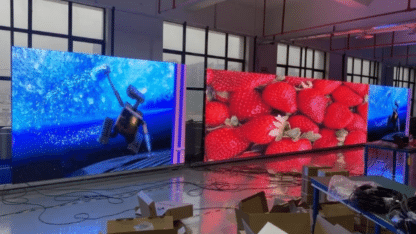






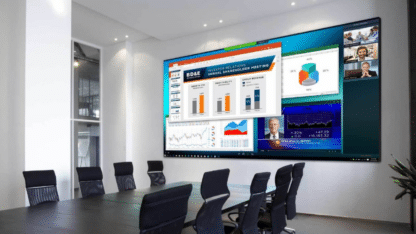

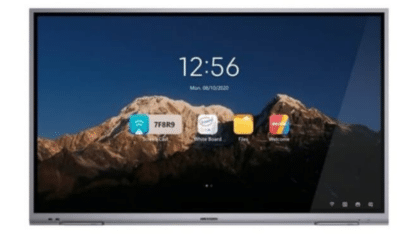





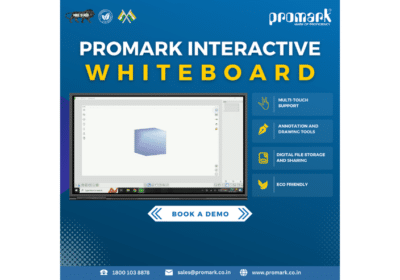

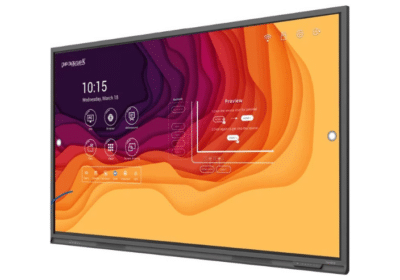




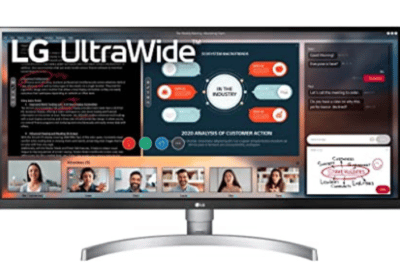

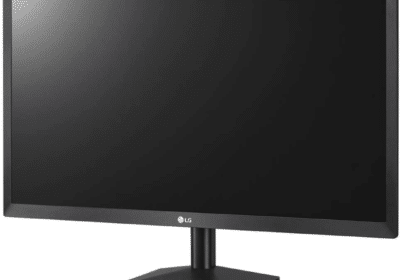
You must be logged in to post a review.